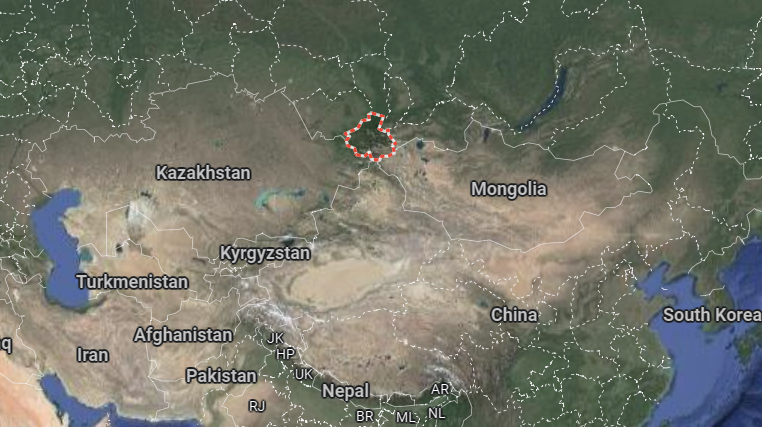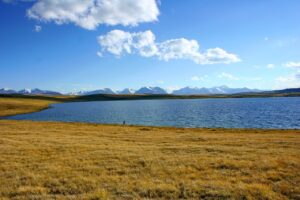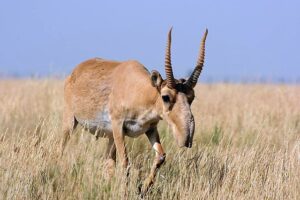If you’re well-versed in Pleistocene ecology, you’ve almost certainly heard about the steppe-tundra, also known as the mammoth steppe. During the Last Glacial Period, this biome covered vast parts of three continents: Europe, Asia, and North America. The name “steppe-tundra” refers to the fact that it contained a unique mixture of steppe and tundra species, whereas its synonym “mammoth steppe” was specifically coined to emphasize the diverse community of iconic ice-age animals(such as woolly mammoths) which inhabited it1. The steppe-tundra was replaced at the end of the ice age by mostly boreal forest and generic tundra.
The causes for the eventual demise of this massive, distinctive ecosystem are contentious. Some scientists argue that it could only survive under a very cold, dry climate and that the end of such conditions during the transition to the Holocene interglacial is what caused it to vanish2. Others argue that the mammoth steppe was sustained by the community of large herbivores that inhabited it, and that it disappeared because those animals were driven to extinction by humans3.
The question of how steppe-tundra came to be and how it vanished is interesting but it’s a topic for another time. Today, I’m going to talk about a modern relic of the mammoth steppe: the Altai grasslands of southern Siberia.

The Altai mountains are located at the intersection of the borders of China, Russia, Kazakhstan, and Mongolia. The range of elevations combined with the fact that this region is located in the transition zone between the Eurasian steppe to the south and boreal forest to the north creates a heterogenous mix of habitats supporting a wide variety of species4. This picturesque region provides the perfect conditions to host a modern fragment of the mammoth steppe.

There are isolated steppes in northeastern Siberia which paleoecologists have studied to reconstruct the ecology of the mammoth steppe, but those are not a great analogue in that they lack many of the species typical of temperate steppes4. The lowland temperate steppes of Eurasia on the other hand lack many important tundra species that were present in the mammoth steppe. The Altai grasslands support both reindeer and saiga antelope, which are not found together elsewhere anymore.

Higher elevation areas in the Altai also support mountain sheep and the endangered snow leopard, while wetter areas are home to pristine forests. The juxtaposition of these forests near grasslands is reminiscent of Pleistocene northern Eurasia where boreal forests would have bordered cold steppes in certain areas. A climatic phenomenon known as the Siberian high causes winters in the region to be exceptionally cold and dry, like virtually all of Siberia.
Now on to a bit of intriguing archeology: the Ukok plateau in the Altai region has produced mummies of the Iron Age Scythian-linked “Pazyryk” culture. The Scythians(also known as Sakas) were a nomadic Indo-European people who roamed the vast steppes of Eurasia and established kingdoms as far as West Asia, China, and India. They were one of many influential nomadic cultures present in the south Siberian steppes for much of history.
The Pazyryk Saka, like other early Indo-European cultures, had an extremely strong bond with their horses and buried their dead in special mounds called kurgans5. Horses were considered sacred and sacrificed to be buried alongside people in these burials. The most famous individual buried in a Pazyryk kurgan is the “Ice Maiden” or “Princess of Ukok”, a mummy who remained frozen in ice for 2400 years due to the heavy permafrost of the area.

To conclude, the scenic Altaian steppe is a special place which serves as a vestigial fragment of the mammoth steppe due to its unique geography and topography and also hosted some interesting archeological finds from an eastern extension of the Scythians/Sakas. However, it’s far from the only thing that Siberia has to offer. Siberia is full of breathtaking scenery and archeological/paleontological importance. I expect to write much more about it in the future.
References
1. Guthrie, R. D. (1990). Frozen fauna of the Mammoth Steppe : the story of the blue babe. University Of Chicago Press.
2. Guthrie, R. D. (2001). Origin and causes of the mammoth steppe: a story of cloud cover, woolly mammal tooth pits, buckles, and inside-out Beringia. Quaternary Science Reviews, 20(1-3), 549–574. https://doi.org/10.1016/s0277-3791(00)00099-8
3. Zimov, S. A., Zimov, N. S., Tikhonov, A. N., & Chapin, F. S. (2012). Mammoth steppe: a high-productivity phenomenon. Quaternary Science Reviews, 57, 26–45. https://doi.org/10.1016/j.quascirev.2012.10.005
4. Chytrý, M., Horsák, M., Jiří Danihelka, Nikolai Ermakov, German, D. A., Hájek, M., Hájková, P., Kočí, M., Svatava Kubešová, Pavel Lustyk, Nekola, J. C., Věra Pavelková Řičánková, Zdenka Preislerová, Philipp Resl, & Valachovič, M. (2018). A modern analogue of the Pleistocene steppe-tundra ecosystem in southern Siberia. Boreas, 48(1), 36–56. https://doi.org/10.1111/bor.12338
5. NOVA | Transcripts | Ice Mummies: Siberian Ice Maiden | PBS. (2019). Pbs.org. https://www.pbs.org/wgbh/nova/transcripts/2517siberian.html